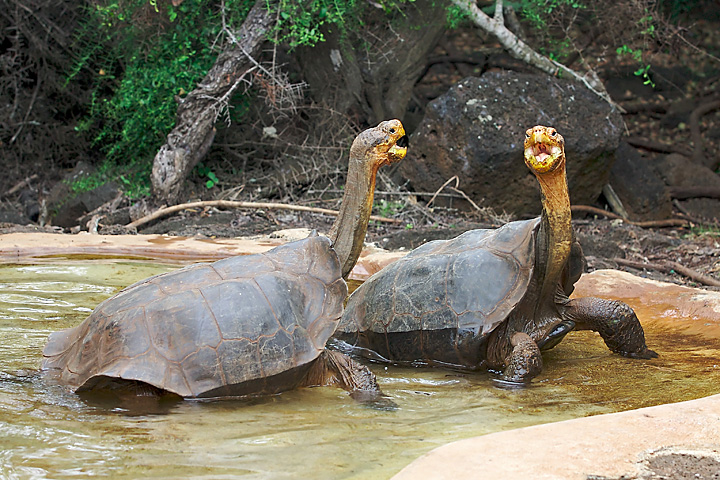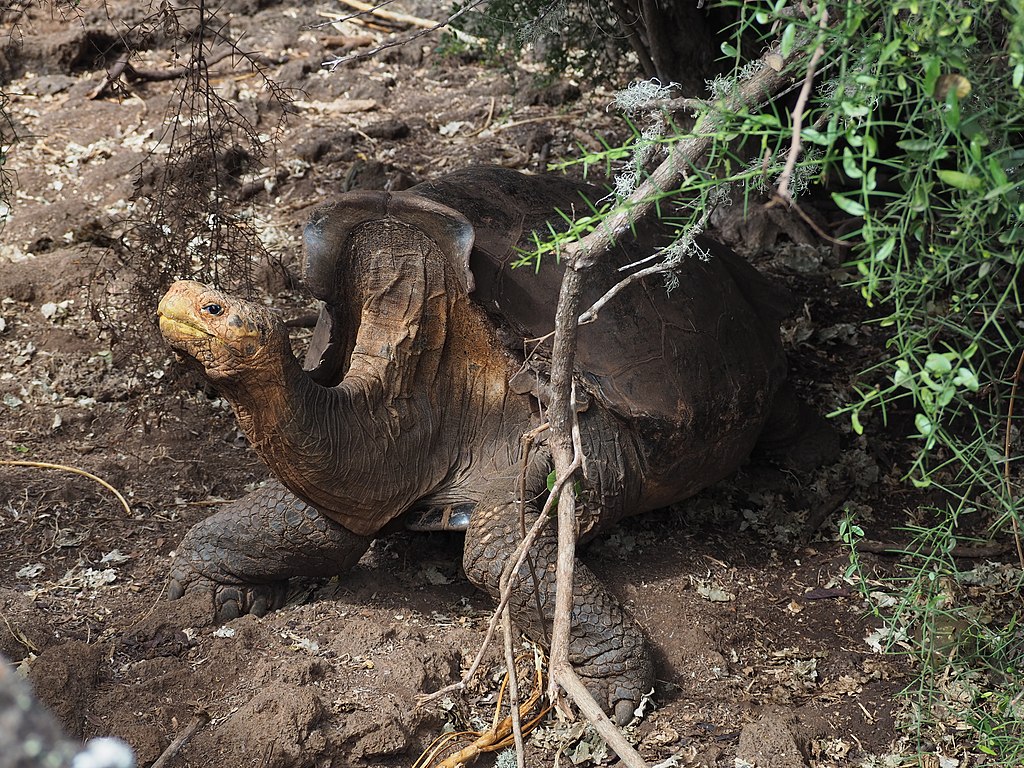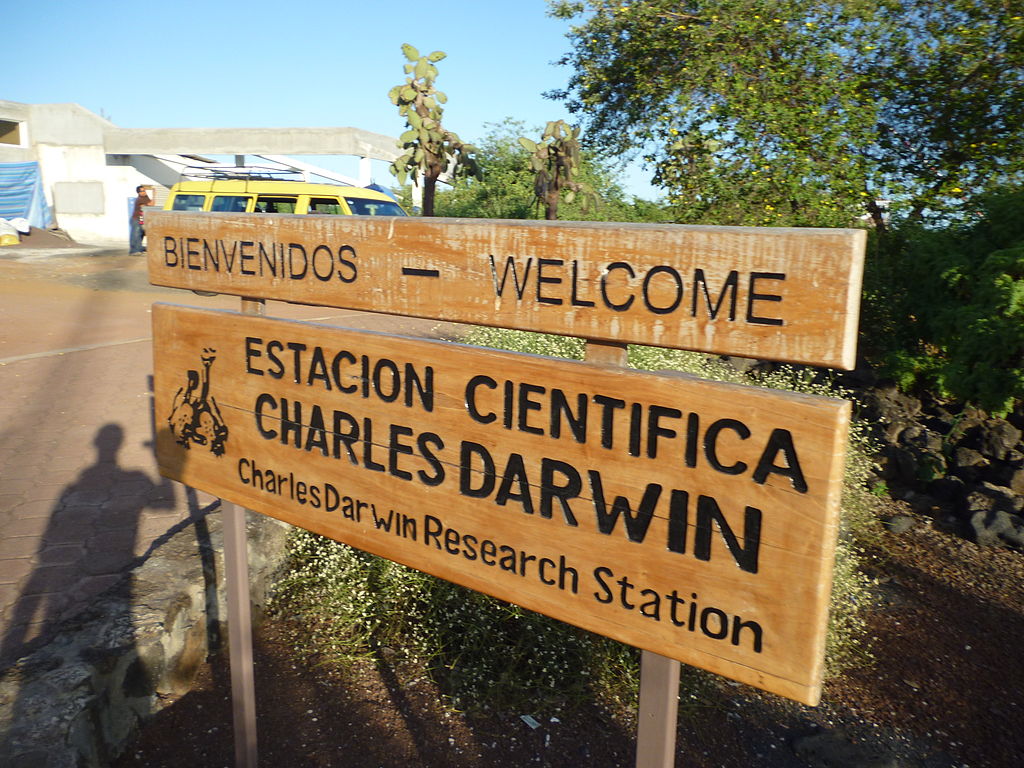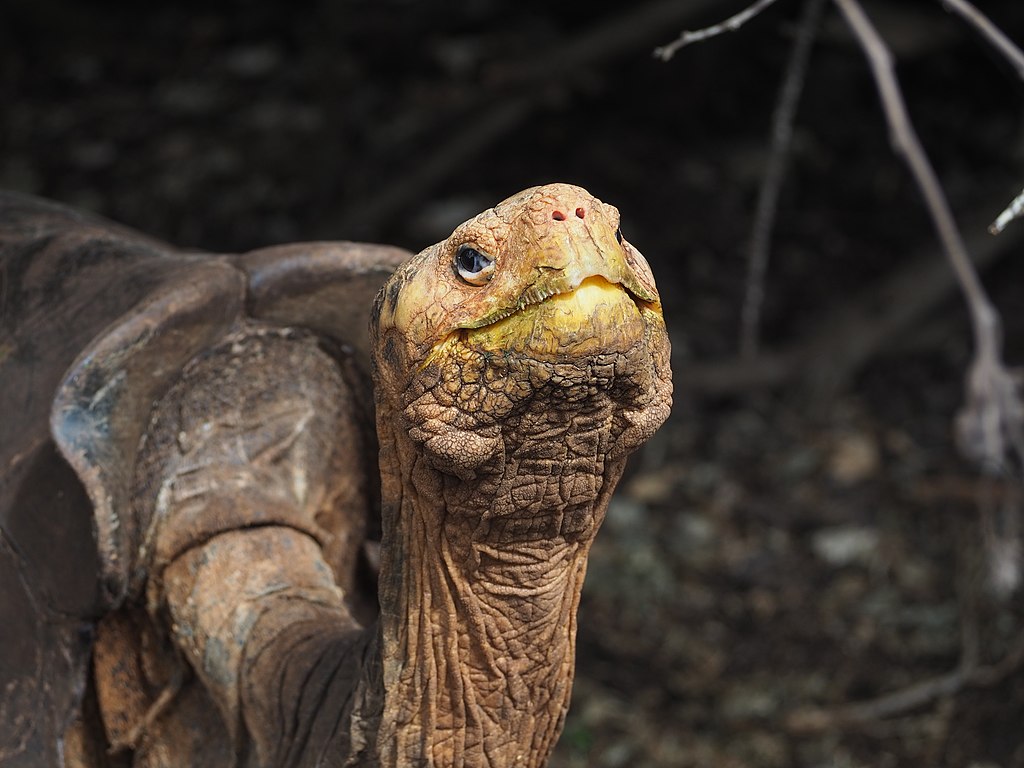Española Island, Galapagos, Ecuador —(Map)
A Hood Island giant tortoise named Diego has returned to his home island in the Galapagos after becoming the father of up to 800 tortoises. Diego’s efforts have helped raise the number of Hood Island tortoises from 15 to nearly 2,000.
The Galapagos islands are a special group of islands 600 miles (1,000 kilometers) off the coast of Ecuador. Because the islands are so far from land, they are home to many plants and animals that can’t be found anywhere else, such as special species (kinds) of giant tortoises.

Storpilot, via Wikimedia Commons.)
The Galapagos islands are also far from each other. This has allowed different kinds of animals to develop on different islands. There are at least 12 different species of Galapagos tortoises, most living on separate islands.
Diego was originally from an island called Española. At times, the island has also been called Hood Island, which is how Diego’s species was given the name “Hood Island giant tortoise”.
Giant tortoises can live for more than 100 years. They have large bodies and long, leathery necks. Over long periods of time, the tortoises have evolved, slowly changing their shells and body styles to better fit the environment they live in.

(Source: lightmatter [CC BY], via Wikimedia Commons.)
Hood Island tortoises are smaller than most other giant tortoises, but they’re still large. Diego weighs about 175 pounds (80 kilograms) and is roughly 3 feet (90 centimeters) long when he stretches out his body.
But, like many other Galapagos tortoises, the numbers of Hood Island tortoises dropped dangerously low. Long ago, Galapagos was a favorite stopping place for sailors and pirates, who used giant tortoises as food on their trips.

(Source: Kaldari [CC0], via Wikimedia Commons.)
In 1976, Diego was one of only 15 Hood Island tortoises known to be alive. So the Charles Darwin Research Station (CDRS) began a program to raise their numbers.
Several Hood Island tortoises were brought to a special enclosed area on Santa Cruz island, where young tortoises could be raised and cared for in a protected area.

(Source: David Adam Kess [CC BY-SA], via Wikimedia Commons.)
At the time, Diego had been living in a zoo in California for about 30 years. When scientists realized he was a Hood Island tortoise, he was returned to take part in the program.
For over 40 years, the program created young tortoises, which were released on Española island.
The program turned out to be a huge success, and Diego played a large part in the positive results. Now there are nearly 2,000 Hood Island tortoises alive. Diego is believed to be responsible for about 40% of them.

(Source: Kaldari [CC0], via Wikimedia Commons.)
Now scientists aren’t so worried that the Hood Island tortoises might be wiped out. Instead they have a different question – what effect will having so many tortoises from a single father have on the tortoises in general?
Because there is no longer a need for a special program for Hood Island tortoises, Diego and 14 other tortoises have now been returned to Española, where they’ve joined the other tortoises living in the wild.
Because there is no longer a need for a special program for Hood Island tortoises, Diego and 14 other tortoises have now been returned to Española, where they are living in the wild. The Twitter post below shows part of the process.
😕
This tweet has not been loaded because of your cookie choices. To view the content, you can accept 'Non-necessary' cookies.
Diego is currently 100 years old. Experts say that he is likely to keep having children until he dies, which could be many, many years from now.
Did You Know…?
Another Hood Island tortoise, named only “E5”, had even more children than Diego. But E5 is quiet, which means that Diego gets most of the attention.
😕
This map has not been loaded because of your cookie choices. To view the content, you can accept 'Non-necessary' cookies.
